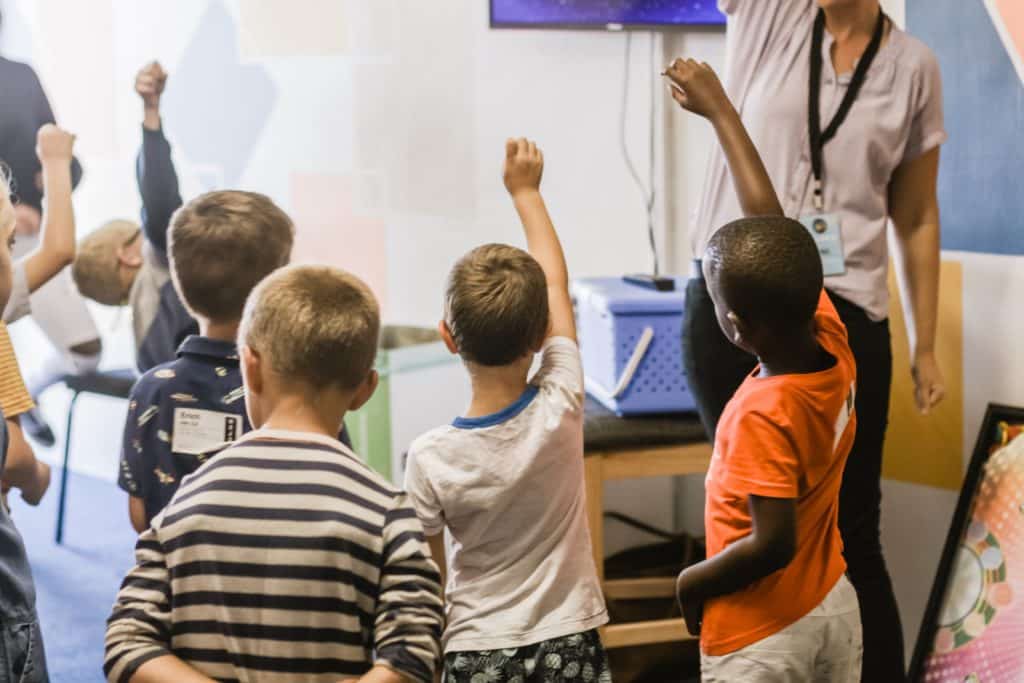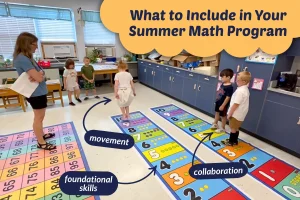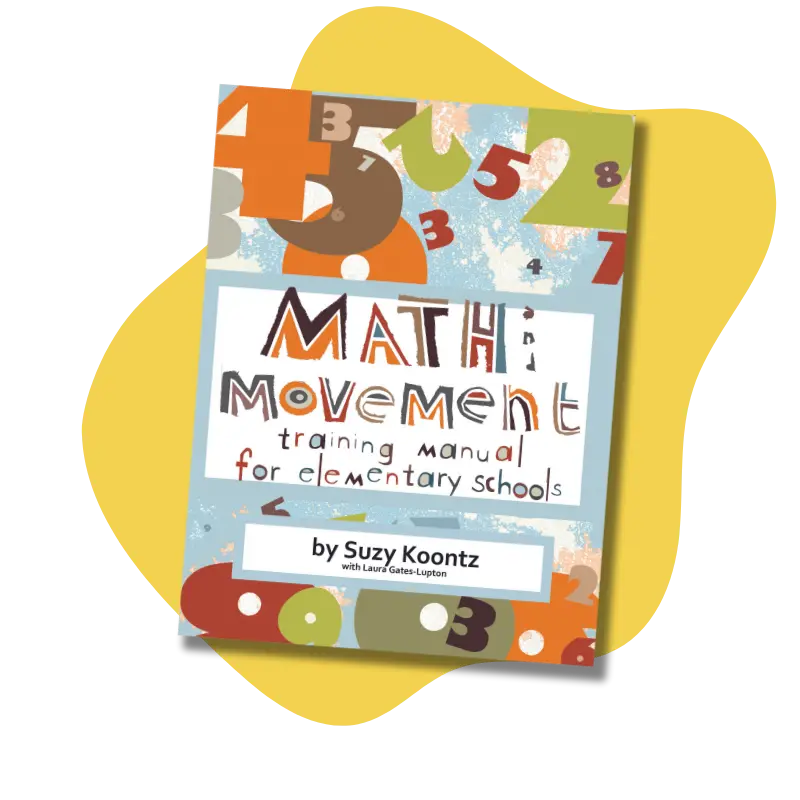
- Trusted by Over 2000 Schools Nationwide
- Top-Rated PD Provider ★★★★★ 4.77
- Save with our Kits & Packages – Shop Now! →

Hooray! The school year has just begun (or is just about to begin, depending on where you are located). Students might still be in summer mode and not excited to start learning again. But have no fear! Math & Movement is here to help you combat the post-summer blues and make your lessons full of learning and fun!
Start the day right by telling your students what they have to look forward to. A daily morning meeting will provide students with a designated time to wake up their brains, say what they need to say, and start moving a little. One activity you could incorporate into your morning meeting could be a simple game of catch. The twist is that students have to remember who passed them the ball and who they threw it to after.
Round one starts off by establishing the pattern of who passes who the ball. During round two, students practice the pattern. In round three, students pass one ball at a faster pace. Once they get the hang of it, add a second ball into the pattern, and then a third. This will get their brains moving, and give them an exciting start to the day. Morning meetings should also include the opportunity for students to voice any concerns that they might be having.
While routine is important for students, you’ll also want to throw them a curve ball every now and then to keep them on their toes. If every day is the same, they will start to get a little bored. However, if you rearrange the daily schedule with new activities, they’ll stay excited and eager to learn.

One fun idea would be to incorporate stations into your lesson plans. For example, you could place different math equations around the room taped to the wall. Split students into groups of three or four and have them travel around to the stations together. This gives students the chance to work independently while getting to move around.
After each group has made it to every station, have the students return to their seats and go over the answers to each question. This idea is perfect for before or after lunch when students have some energy to spare, but they will still be learning!Another idea is Mathketball. If you have access to a basketball hoop either inside or outside, this is a great way for students to release some energy. Have students start by forming a line in front of the hoop. When it’s each students’ turn, ask him or her a multiplication or division question. (You can use equation cards for this if you’d like.) If the student gets the question right, he or she can shoot a basket. This student can get back in line regardless of whether or not he or she makes the basket.
If a student answers the question incorrectly, you can decide between a few different ways to play the game: (option 1) Immediately have him/her step to the side, out of the game. (option 2) Allow him/her to try to make a basket just for fun. Then, have the student step to the side and encourage their classmates after. Or, (option 3) If they make the shot, have them hop back into line to continue the game. The successful basket acts as a ‘free pass’ back into the game in this third option.
Keep the game going until there is one student left. This game usually goes pretty quickly, so you can get a few rounds in within a short period of time!
Using a combination of math and physical activity is a great way to make students more eager to get involved in their learning. Integrating this multi-sensory learning approach into your lesson plans will make your students excited to learn. =One Active Math Movement is Jumping for Jupiter. Have students form one big circle and do the following:
Visit our webpage or check out this activity guide to learn more about incorporating active movements into your classroom and all of the teaching tools we have to offer. We also have a whole training manual filled with active math movements (available as an e-book or hard copy).
Movement isn't just for recess
Want to get started with movement-based learning right now? Enter your email to get our training manual with over 250 active math movements. No materials necessary!




Subscribe to Our Newsletter
We never share or sell your data.
Please leave your email and a quick note for us. We will get back to you soon! In the meantime, here are answers to some of our most common questions:

Enter your email to get our training manual with over 250 active math movements. No materials necessary!
We never share or sell your data.